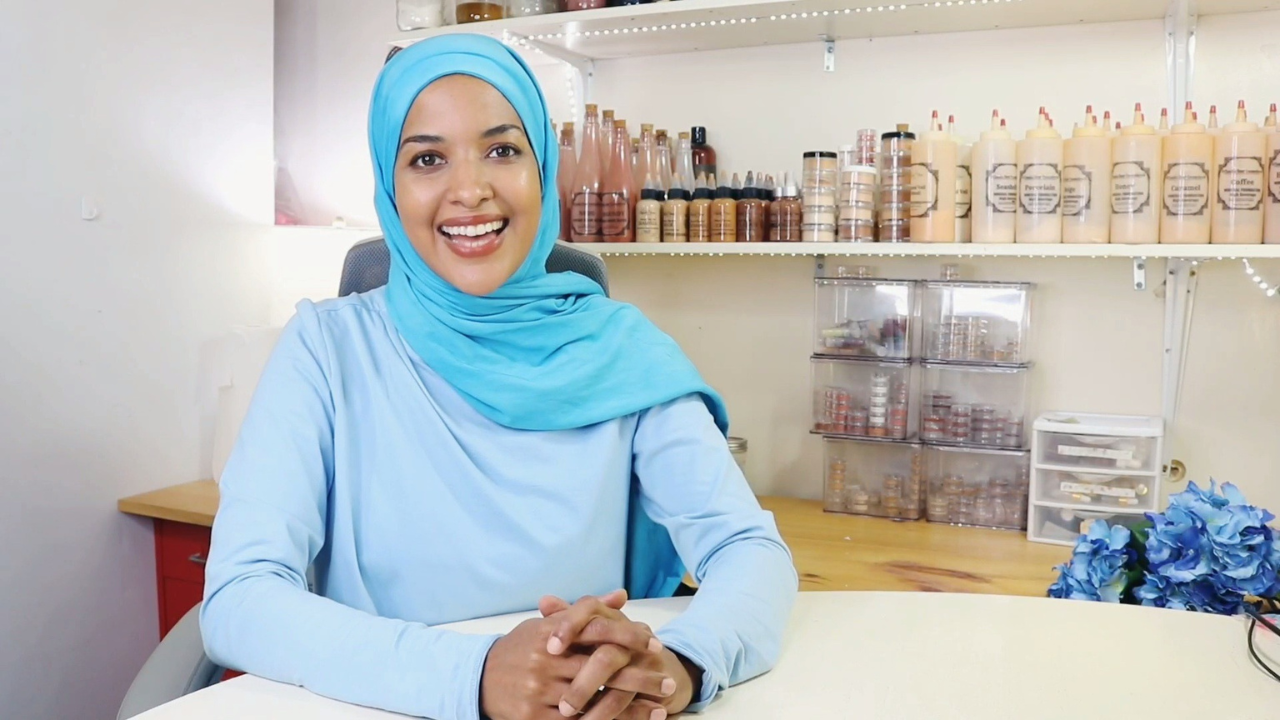By now you probably know what is the moisture barrier,
and you might already know if yours has been compromised
now the question is:
how can we make it better?
That is the goal for this post

🤍Can a damaged moisture barrier be repaired?🤍
Absolutely!
We can say Alhamdulillah for that!
Our body, and in this case, our skin, is able to come really far when it comes to healing, even if you haven't been giving it your best.
So, not only can it be repaired, but it can become even better than it was.
Let's see how we can do that:
Let's implement a strategy (not a set of rules)
Even though at the cellular level our skin is the same,
in the practical level, it is not.
Our lifestyle,culture, environment and stress levels, all play a part in the way our skin behaves.
So bearing that in mind, I want you to see the following advice and see how you can apply it to your situation.
Tip #1
Strip your routine down to the basics.
If you are currently doing a 10 step skin care routine, this will be easy. But if your routine is already simple then you would look at the next step.
The goal when we reduce our routine, is to give your skin the essentials that it needs. These essentials are:
cleansing, balancing and hydration.
So you can try to reduce your routine to these 3 steps to give your skin the space it needs to recover and do its thing.
Tip # 2.
Cut back on exfoliants and acids.
So, let's say you have minimized your routine.
But you are using a salycilic acid cleanser, and toner with chemical exfoliants and a moisturizer with retinol....
If you are noticing some symptoms of a damaged moisture barrier, you want apply products that will not irritate the skin further. So check for the label of your products to see if there are any chemical exfolliants, harsh scrubs, actives or acids, and if there are, then try to reduce their use, or stop it all together.
Tip #3
Use ingredients that support the skin barrier.
So, if you are removing products from your shelf. Don't think that you can't put anything on your skin. On the contrary, there are so many ingredients that support your skin and help it retain the moisture it needs.
Ingredients like ceramides, glycerin, panthenol, squalane, oat, and gentle oils like argan or jojoba. Be on the lookout for these (and more) in your products and build a routine that is all about nourishing.
Tip #4
Be careful with water
This one might surprise you, but it's one of those simple things that can make a big difference over time. If you are anything like me, you love HOT water.
But your skin might not, so constantly indulging in hot, long showers (specially if the hot water is directly hitting your face ) will conribute to a damaged moisture barrier over time.
Just want to make it clear, that in moderation is fine. But constantly and over months and years? that is where the problem grows. Try to wash your face with lukewarm water and pat gently with a soft towel.
Tip #5
Stay consistent.
Speaking of things that cause damage over time,
If you are dealing with signs of a damaged moisture barrier, it's likely that it didn't happen overnight. And that is why I emphasize having a strategy, instead of a series of steps.
Because with a strategy of nourishment and gentleness, you will be able to deal with any setbacks. For example, say you took an extra long shower, and you feel your skin a bit tight and dry.
Then you will treat it with extra hydrating products, maybe an occlusive, and for the next few days you will be more vigilant on the products you apply.
Or if you run out of your favorite gentle moisturizer, but you already know that there is a hydrating toner with glycerin and aloe that you can use in the meanwhile, you will reach for that and avoid any stress.
One you set a strategy in place, maintaining your skin healthy becomes second nature.
Strategy>>> set of steps
So with these tips in place, you can start to reverse any damage to your moisture barrier, and your skin can start breathing and going through the processes it needs to become healthier and better.
So now that we got the foundation of our strategy in place,
How do you implement it all, how long will it take, how hard will it be?
That is a conversation for the next post










![My No-makeup journey so far - [10 years]](http://claudianour.com/cdn/shop/articles/10_year-678172.jpg?v=1726756250&width=1)
